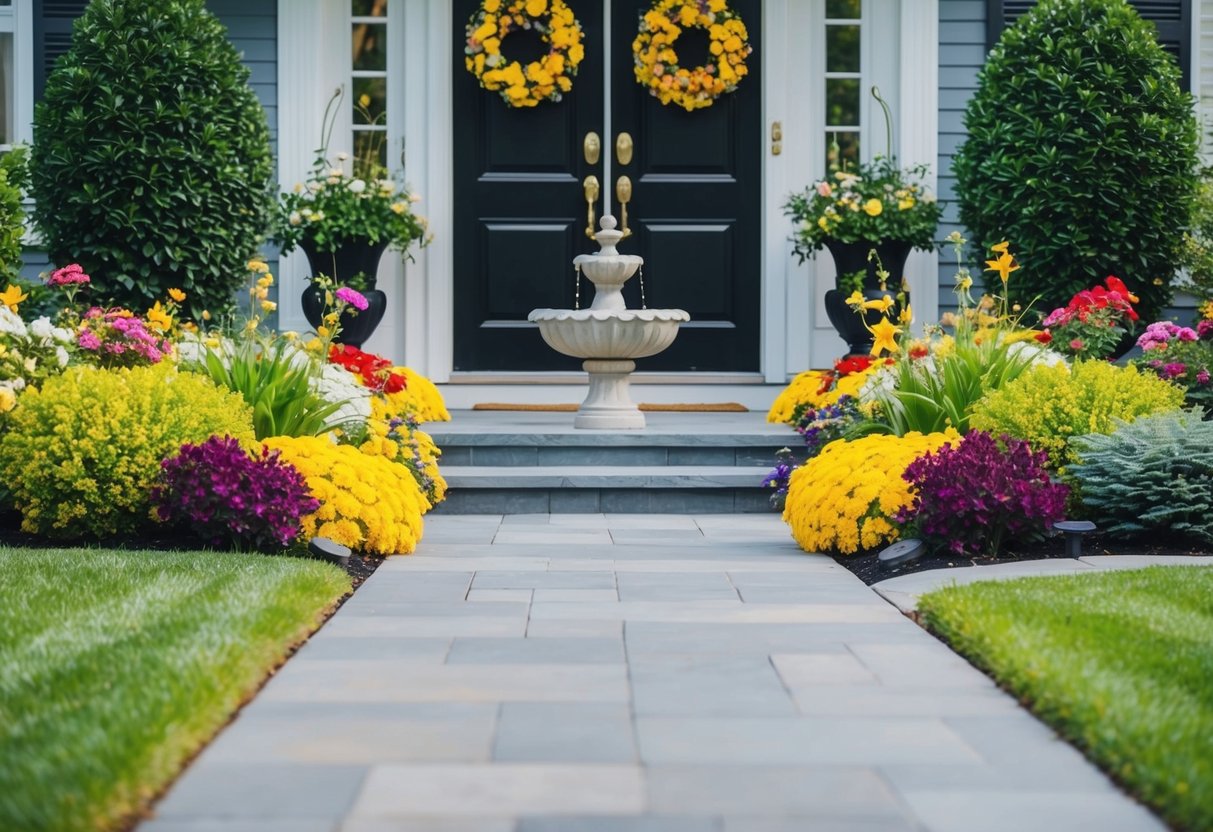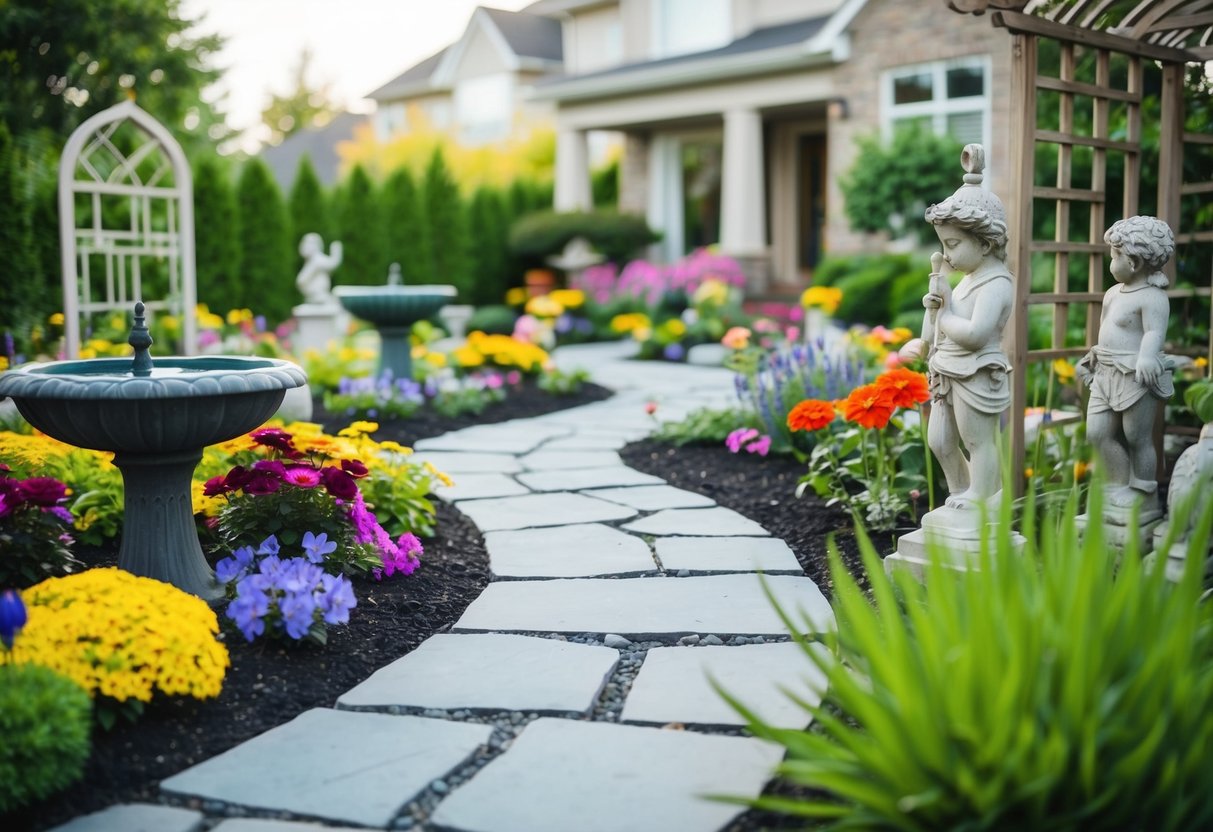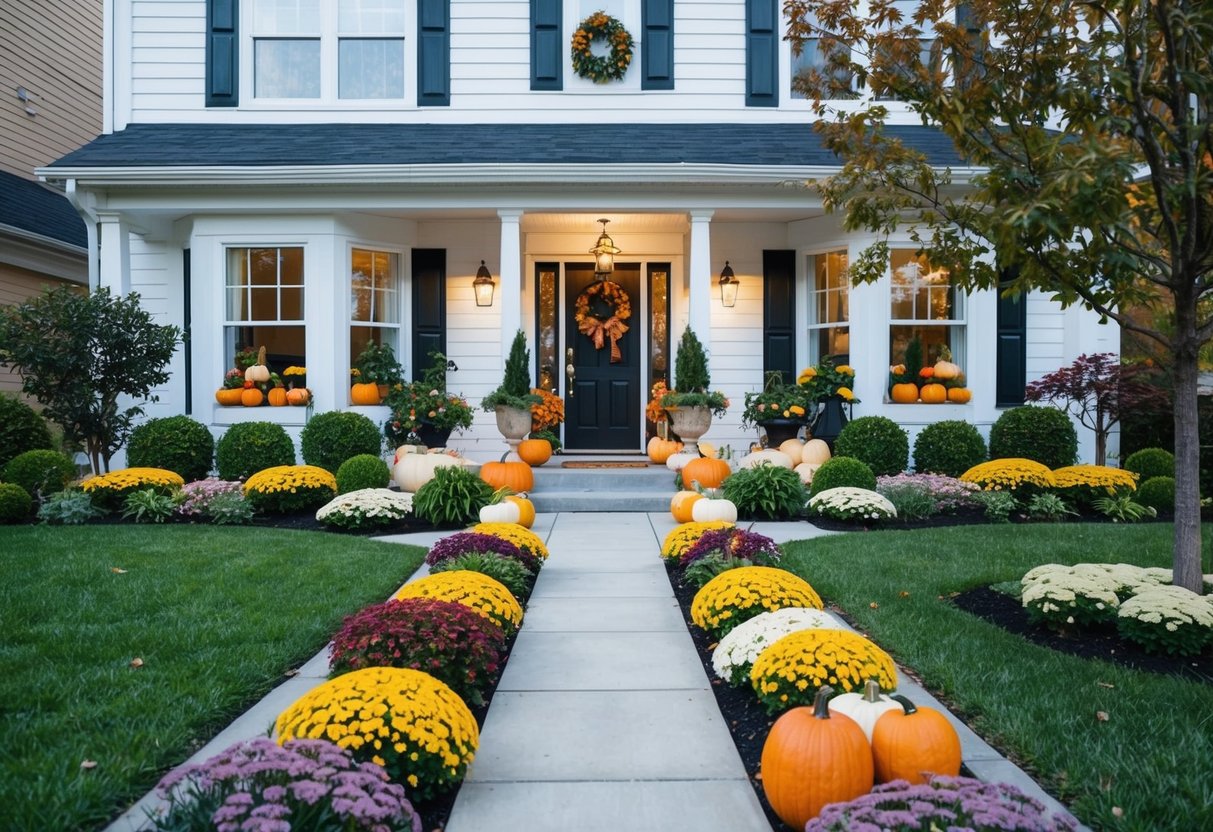How do I arrange my front garden? Simple Tips for a Welcoming Look
Are you ready to transform your front garden into a charming welcome mat for your home? Whether you’re working with a sprawling lawn or a quaint patch of earth, boosting your curb appeal isn’t as daunting as it might seem. Start by envisioning the space you want to create and remember that even small changes can make a big impact. From choosing the right plants to deciding on a color scheme, there are plenty of simple steps you can take.

Think about the layout of your front garden. Incorporating curves, jogs, or steps can add interest, but ensure there’s a practical reason behind each choice. Consider designing walkways that are at least 36 inches wide to combine functionality with visual charm, perhaps exploring widths up to 54 inches so two people can walk side by side. A welcoming front door can also significantly lift your home’s kerb appeal. A fresh coat of paint in colors like gray or black, especially in urban settings, can stand out beautifully against crisp white trim.
Don’t overlook the power of vertical planting in small spaces. Hanging baskets are not only practical for limited areas but also bring bursts of color right to eye level. Low-maintenance greenery, like structured plants flanking your door, can provide a clean and tidy appearance. By focusing on these thoughtful details, you’ll create a front garden that reflects your personal style and enhances your home’s charm.
Planning Your Front Garden Design
Your front garden is the first impression of your home. To make it inviting and beautiful, focus on evaluating the available space, selecting a cohesive theme, and designing a functional layout. This guide will walk you through these steps to create a garden that fits your style and needs.
Evaluating Space and Conditions
Begin by measuring your front garden. Note how much sunlight the area gets during different times of the day. Understand the soil type and quality, as these factors affect what plants will thrive.
Consider existing structures like pathways, driveways, or fences. If your garden is small, think about vertical planting or container gardens to save space. This planning ensures that every plant has enough room to grow.
A front garden that accommodates both visual appeal and practical use can really shine. If your space is limited, prioritize plants that offer both beauty and structure, like shrubs or tall grasses, which can create a sense of depth.
Choosing a Theme or Style
Decide on a theme that complements your home’s architecture. Whether you lean toward a cottage garden with colorful flowers or a minimalist design with sleek lines and greenery, having a theme helps guide your plant and decoration choices.
For small front gardens, selecting a theme is important to avoid overcrowding. Consider a modern look with clean lines or a rustic approach with natural elements. Use colors that align with your house’s exterior.
List of popular themes:
- Cottage style with flowers
- Modern minimalist with greenery
- Rustic charm with natural materials
Themes bring consistency to your design and make it visually appealing.
Creating a Layout
Sketch a basic layout of your garden on paper or use an online tool. Plan the locations of paths, plant beds, and decorative elements like statues or birdbaths. Walkways should be wide enough for comfort.
For small front garden ideas, concentrate on maximizing the space. Use curving paths to add interest or create zones for different plant types. Ensure the layout allows for easy maintenance and a clear view from the street.
Create a balanced look by placing larger plants as focal points and filling gaps with smaller ones. This method adds depth and guides the eye naturally through the garden.
Selecting Plants for Your Garden

When arranging your front garden, picking the right plants is crucial. This involves creating appealing color schemes, combining different plant types, and including elements like shrubs and trees.
Choosing Color Schemes and Textures
Creating a color scheme brings harmony to your garden. Start by selecting a few core colors. Mixing bold colors like red and yellow can create an energetic feel. For a calmer vibe, choose pastels like pink and lavender. Textures are just as important. Combine the soft look of ferns with the rougher feel of ornamental grasses. Mixing different textures adds depth to your garden and makes each plant stand out.
Picking the Right Mix of Perennials and Annuals
A balanced mix of perennials and annuals keeps your garden lively throughout the year. Perennials, like daylilies, return each year and require less maintenance. They form the backbone of your garden. Annuals, such as marigolds, bloom brightly but only for a season. They are perfect for adding bursts of color. Plan your garden layout to ensure there’s something blooming each season, making your garden inviting all year.
Incorporating Shrubs and Trees
Shrubs and trees add structure and height. Trees like maples provide shade and serve as focal points. Shrubs, including boxwood, make great borders or privacy screens. Consider placement carefully; taller trees should be at the back or sides. This way, they don’t block the view of smaller plants. Adding roses as shrubs can introduce both color and fragrance, making your space even more appealing.
Incorporating Decorative Elements

Enhancing your front garden with decorative elements can transform it into a beautiful, welcoming space. Key ideas include using containers and hanging baskets for vibrant plant displays, installing fences and garden walls for structure and privacy, and setting up focal points to draw attention.
Adding Containers and Hanging Baskets
Using containers and hanging baskets brings variety in height and color to your garden. Containers, like ceramic pots or a rustic window box, can be placed on patios, along pathways, or near entrances for added charm. For a lush look, consider fiberglass pots with large, leafy plants.
Hanging baskets are perfect for height and layers. They’re ideal near doorways or under porch eaves, filled with cascading flowers like petunias or ferns. This vertical gardening technique maximizes space and allows you to enjoy a mix of flowers and greenery.
Setting Up Fences and Garden Walls
Fences and garden walls offer privacy and define spaces within your garden. A classic picket fence adds a charming, traditional look and pairs well with cottage garden ideas. Picket fences can be painted white or in muted tones to match the surrounding landscape.
Garden walls can be made from brick, stone, or even modern materials like concrete. These structures help create distinct areas and can act as a backdrop for your plants. Consider a garden wall with built-in planters or seating for added functionality.
Integrating a Focal Point
A focal point anchors your garden’s design and draws the eye. Consider adding a water feature, like a small pond or fountain. Not only does it add a peaceful element, it can become a natural gathering spot.
For a touch of artistry, sculpture or a unique piece of garden art can stand out among greenery. You might also use topiary for a living focal point, shaping trees and shrubs into interesting forms. Each option gives your garden a unique character that reflects your personal style.
Building Paths and Borders

Creating pathways and borders in your front garden can enhance both its look and functionality. Thoughtful design can improve movement and add unique touches with different edging ideas.
Designing a Functional Garden Path
When designing a garden path, make sure it’s both practical and visually appealing. A good path should be wide enough for two people to walk side by side easily. Aim for paths that are 36 inches wide at a minimum.
Consider using curves and steps to add charm. Curves can guide the eye through the garden, creating a sense of mystery. Use durable materials like stone, gravel, or even reclaimed brick to build the path. Each material offers a unique look.
If you want an elegant path, you might choose materials that match the house style. For a more casual feel, gravel or stepping stones can be a good choice. Balancing practicality and style will help you create a path you’ll love.
Ideas for Unique Edging
Edging helps define spaces and keeps plants in the flower bed, giving a tidy look to your garden. Stacked stones create a rustic border, providing a natural and earthy feel. This can work well for a more relaxed garden setting.
For a modern look, metal or plastic edging can work well. It’s easy to install and keeps mulch and soil in place. Consider using materials you already have, like spare bricks or wood, to add a touch of personalization.
Planting low-growing plants along the border is another way to add a living edge. This softens the transition between path and garden, adding color and texture. Choose plants that suit your climate to ensure they thrive.
Maintenance and Seasonal Considerations

Caring for your garden involves planning for less upkeep and keeping things beautiful all year. It’s about using resources wisely and considering wildlife that might visit your garden.
Low-Maintenance Gardening Tips
To keep your garden manageable, choose plants that don’t need much attention and can survive with minimal watering. Perennials are a great choice as they come back every year without needing replanting. Mulching can help suppress weeds and retain moisture, reducing the need for frequent watering.
Using native plants is beneficial because they are adapted to your local climate and soil conditions. They support local wildlife, creating a natural habitat in your garden. Water-saving techniques, like drip irrigation, are effective for low upkeep.
Simple garden design can also reduce work. Limit the lawn area or use ground covers instead. Invest in quality garden tools to make maintenance easier, and set regular, simple routines for tasks like weeding and trimming.
Planning for Year-Round Appeal
Your garden can be beautiful in every season by planning for year-round interest. Choose plants that offer structure during winter, like evergreens or those with interesting bark or branches. These provide a backdrop and create a sense of continuity even in colder months.
For spring, consider early-blooming bulbs like daffodils. In summer, bright flowers will bring color and vibrancy. Autumn foliage can add warm hues to your garden, extending its appeal into the later months. Consider adding features such as water elements or art pieces for added interest.
Creating a wildlife haven with bird feeders or a small pond can invite animals to your garden throughout the year. This adds a dynamic element, making your garden lively in all seasons, and offers you the joy of observing nature up close.







